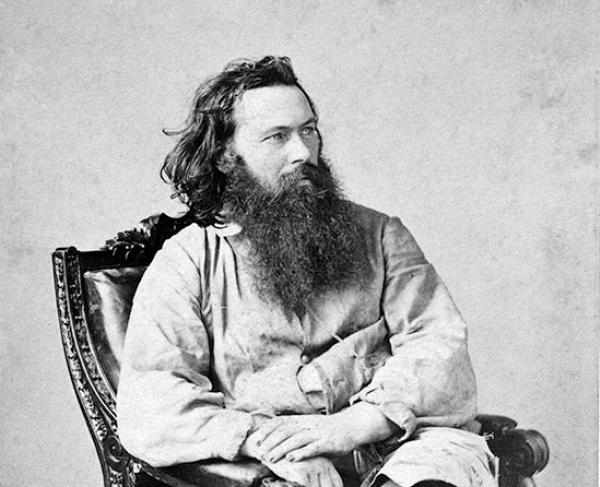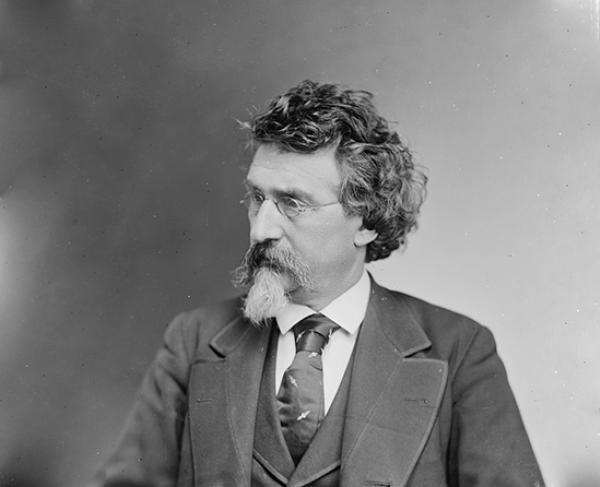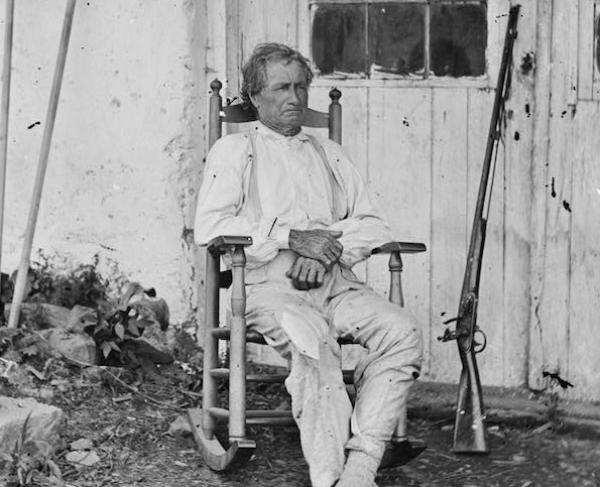Alexander Gardner

Alexander Gardner’s work as a Civil War photographer has often been attributed to his better known contemporary, Mathew Brady. It is only in recent years that the true extent of Gardner’s work has been recognized, and he has been given the credit he deserves.
Gardner was born in Paisley, Scotland in 1821, later moving with his family to Glasgow. In 1850, he and his brother James travelled to the United States to establish a cooperative community in Iowa. Returning to Scotland to raise more money, Gardner purchased the Glasgow Sentinel, quickly turning it into the second largest newspaper in the city.
In 1851, Gardner paid a visit to the Great Exhibition in Hyde Park, London, where he saw the photographs of Mathew Brady for the first time. Shortly afterward, Gardner began reviewing exhibitions of photographs in the Glasgow Sentinel, as well as experimenting with photography on his own.
In 1856, Gardner decided to immigrate to America, eventually settling in New York. He soon found employment with Mathew Brady as a photographer. At first, Gardner specialized in making large photographic prints, called Imperial photographs, but as Brady’s eyesight began to fail, Gardner took on more and more responsibilities. In 1858, Brady put him in charge of the entire gallery.
With the start of the Civil War in 1861, the demand for portrait photography increased, as soldiers on their way to the front posed for images to leave behind for their loved ones. Gardner became one of the top photographers in this field.
After witnessing the battle at Manassas, Virginia, Brady decided that he wanted to make a record of the war using photographs. Brady dispatched over 20 photographers, including Gardner, throughout the country to record the images of the conflict. Each man was equipped with his own travelling darkroom so that he could process the photographs on site.
In November of 1861, Gardner was granted the rank of honorary Captain on the staff of General George McClellan. This put him in an excellent position to photograph the aftermath of America’s bloodiest day, the Battle of Antietam. On September 19, 1862, two days after the battle, Gardner became the first of Brady’s photographers to take images of the dead on the field. Over 70 of his photographs were put on display at Brady’s New York gallery. In reviewing the exhibit, the New York Times stated that Brady was able to “bring home to us the terrible reality and earnestness of war. If he has not brought bodies and laid them in our door-yards and along streets, he has done something very like it…” Unfortunately, Gardner’s name was not mentioned in the review.
Gardner went on to cover more of the war’s terrible battles, including Fredericksburg, Gettysburg, and the siege of Petersburg. He also took what is considered to be the last photograph of President Abraham Lincoln, just 5 days before his assassination. Gardner would go on to photograph the conspirators who were convicted of killing Lincoln, as well as their execution.
After the war, Brady established a gallery for Gardner in Washington, DC. In 1867, Gardner was appointed the official photographer of the Union Pacific Railroad, documenting the building of the railroad in Kansas as well as numerous Native American tribes that he encountered.
In 1871, Gardner gave up photography to start an insurance company. He lived in Washington until his death in 1882. Regarding his work he said, “It is designed to speak for itself. As mementos of the fearful struggle through which the country has just passed, it is confidently hoped that it will possess an enduring interest.”


